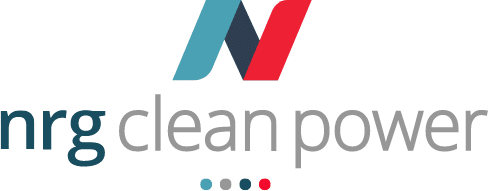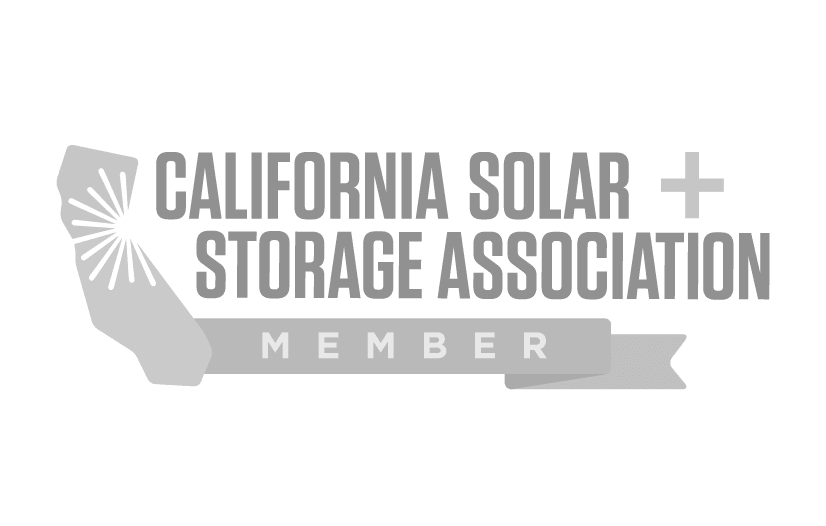
The California Air Resources Board (ARB) isn’t just another regulatory body—it’s the backbone of the state’s push toward a cleaner, greener future. Since 1967, ARB has been at the forefront of tackling air pollution and driving the kind of climate policies that set California apart. If you’re in the renewable energy game, understanding ARB’s role and how to work within its framework is non-negotiable.
One of the cornerstones of ARB’s work is its climate goals: cutting greenhouse gas emissions to 40% below 1990 levels by 2030.
That’s no small feat.
A key weapon in this fight is the Cap-and-Trade Program. It’s a system that puts a price on pollution, covering around 80% of the state’s emissions and pushing businesses to adopt cleaner technologies. Solar energy, of course, plays a massive part in this.
We break down everything you need to know about ARB Offset Credits—how they work in the Cap-and-Trade Program and the exact steps to register your solar project. From project listing to verification and credit issuance, we’ll cover the nitty-gritty details.
Plus, we’ll touch on how solar ties into California’s Low Carbon Fuel Standard (LCFS) and the pros and cons of jumping into ARB programs.
Whether you’re a developer trying to maximize your investment, an investor eyeing green energy opportunities, or just someone interested in what makes California’s clean energy machine tick, this is your go-to roadmap.
Disclaimer: The regulations and requirements of the California Air Resources Board (ARB) are subject to change. It is crucial to conduct your own research and consult with professionals before making any decisions or taking actions based on this guide.
What are the Steps to Register a Solar Project for ARB Credits?
Getting a solar project registered for ARB credits isn’t a one-and-done process. It’s detailed, with a checklist that demands precision and patience. If you’re diving in, here’s the breakdown:
Pre-application and Consultation
Before you even start filling out forms, do your homework.
- Study the LCFS regulations. Look at past applications that were approved—they’re a goldmine for understanding what works.
- Don’t skip reaching out to CARB. Their team can flag potential issues, answer eligibility questions, and save you headaches later.
Project Listing Requirements
Listing the project comes next, and this step is where the details pile up.
- Register as an opt-in project operator in the LCFS Reporting Tool (LRT). It’s a mandatory step, so don’t gloss over it.
- Submit a full application, and by “full,” they mean it. Here’s what you’ll need:
- A description of your innovative method and how it reduces emissions.
- Engineering drawings or process flow diagrams that map out the system.
- GPS-coordinated maps of your solar generation facilities.
- A preliminary estimate of the credits your project could generate.
- An attestation letter confirming the accuracy of everything you’ve submitted.
Monitoring, Reporting, and Verification
After listing, the project doesn’t run on autopilot. You’ve got ongoing responsibilities:
- Set up a monitoring plan to track solar electricity production. Make sure it’s thorough—this data backs up your credits.
- Regularly report your performance to CARB. No skipping or fudging.
- Get your project verified by a CARB-accredited third-party. This is non-negotiable and ensures your credits are legit.
Application Submission and Review
When it’s time to submit, the process ramps up:
- Send in your application and all supporting documents. CARB staff will take a close look and check for completeness within 30 days.
- After that, your application enters a 10-day public comment period. Pay attention here—public comments can shape CARB’s final decision.
- Address any feedback from the comment period. It’s your last chance to refine things before the CARB Executive Officer makes the call.
If approved, your project will generate Registry Offset Credits. These can eventually be converted into ARB Offset Credits, making them usable in the Cap-and-Trade Program.
Registering isn’t fast or simple, but if done right, the payoff is worth it. The credits don’t just support your project—they help drive California closer to its clean energy goals.
How is the Issuance of ARB Offset Credits Determined?
The California Air Resources Board (CARB) doesn’t hand out ARB Offset Credits lightly. Each credit must meet strict criteria and pass through a tough verification process.
If a project doesn’t tick every box, it won’t make the cut.
Criteria for Issuance
To qualify for ARB Offset Credits, greenhouse gas (GHG) reductions or removals must be:
- Real: The reductions must actually happen, no smoke and mirrors.
- Additional: They can’t be something that would’ve occurred anyway.
- Quantifiable: The numbers need to be measurable and verifiable.
- Permanent: No temporary fixes here. The reductions must last.
- Verifiable: Someone else must be able to check the math and agree.
- Enforceable: If the project fails to deliver, there are consequences.
Calculation of GHG Reductions
One ARB Offset Credit equals one metric ton of CO2 equivalent (CO2e). That’s it—no rounding, no estimating. Every reduction must come from a clearly defined Reporting Period, and the calculations must stick to CARB-approved Compliance Offset Protocols.
It’s as exacting as it sounds.
Verification Requirements
Before a single credit is issued, projects need a stamp of approval—a Positive Offset or Qualified Positive Offset Verification Statement. This comes from an ARB-accredited verification body.
Think of it as an audit, but for GHG reductions.
If the reductions don’t line up with the protocols or meet CARB’s standards, no credits will be issued.
Timeline for Credit Issuance
The process for getting credits issued isn’t quick, and every step is mapped out:
- CARB reviews the project documentation within 45 calendar days after receiving all the required information.
- If everything checks out, CARB issues the credits to the Issuance Account within 15 calendar days.
- CARB notifies the Offset Project Operator or Authorized Project Designee within 5 working days of issuing the credits.
- The credits are then transferred to the designated Holding Account within 15 working days of the Offset Project Registry confirming the cancellation of corresponding registry offset credits.
- CARB updates its Offset Credit Issuance Table twice a month to reflect any new credits issued.
The system might feel rigid, but that’s the point. Every ARB Offset Credit represents real, verifiable action against greenhouse gas emissions.
No shortcuts, no compromises. That’s how CARB ensures the program stays credible.
What are the Compliance Requirements for Solar Projects under ARB?
ARB’s compliance requirements aren’t suggestions—they’re non-negotiable rules. To maintain the validity of issued credits, Offset Project Operators (OPOs) must meet strict standards, from monitoring and reporting to verification and record-keeping.
Missing a step or deadline? That’s a fast track to disqualification.
Monitoring and Reporting Obligations
Ongoing monitoring is the backbone of compliance. Every project must submit an Offset Project Data Report for each reporting period, typically lasting 12 to 24 months. These reports aren’t just summaries—they need to include every detail required by the applicable Compliance Offset Protocol.
No cutting corners.
Record-Keeping Requirements
Think short-term documentation is enough? Think again. OPOs are required to keep every piece of documentation tied to the project for at least 15 years after the credits are issued. Monitoring data, calculations, verification reports—it all needs to be on hand.
The goal?
Transparency and accountability, even years down the line.
Verification and Auditing Processes
Independent verification isn’t just a box to check—it’s a critical step for ensuring the integrity of offset credits. Each Offset Project Data Report must be reviewed by an ARB-accredited third-party verifier.
The process is exhaustive:
- Desk reviews to analyze project documentation.
- On-site visits to confirm data accuracy.
- Rigorous technical reviews to validate compliance.
And it doesn’t stop there. ARB retains the right to audit any project at any time. If there’s even a hint of noncompliance, they’ll dig deeper.
Compliance Periods and Deadlines
Deadlines matter. Offset Verification Statements must be submitted to an Offset Project Registry within nine months of the end of each reporting period. Miss the deadline, and the credits for that period are off the table. No exceptions.
For sequestration projects, verification services must be obtained at least once every six years. Skipping this step isn’t an option—it’s mandatory to maintain eligibility.
ARB’s compliance framework is as much about ensuring credibility as it is about holding projects accountable. For solar projects looking to secure offset credits, following these requirements to the letter isn’t optional—it’s the only way to stay in the game.
Understanding the Role of ARB in Solar Credits
First things first—ARB is the state agency driving California’s ambitious climate goals. Since its establishment in 1967, ARB has tackled everything from air pollution to greenhouse gas emissions, and it’s a cornerstone of California’s transition to a low-carbon economy.
Solar energy plays a big part in this. To hit its clean energy targets, California needs to nearly quadruple rooftop solar capacity to 39 gigawatts by 2045. Enter ARB’s Cap-and-Trade Program. By pricing carbon emissions, the program incentivizes investment in renewable energy, including solar, making it a key driver of solar adoption statewide.
What Are ARB Offset Credits?
ARB Offset Credits are compliance instruments representing one metric ton of CO2-equivalent greenhouse gas reductions. In plain terms, they’re tradable credits tied to emissions reduction projects.
These credits let companies meet up to 4% of their reduction obligations under the Cap-and-Trade Program, but with a catch—half of those credits must come from projects with direct environmental benefits to California.
Eligible projects follow strict protocols approved by ARB, covering areas like forestry, urban forest projects, livestock, and methane capture.
While solar isn’t explicitly listed, its contributions to emissions reductions can still align with ARB’s broader climate initiatives, particularly through mechanisms like the Low Carbon Fuel Standard (LCFS).
How do Solar Projects Contribute to California’s Low Carbon Fuel Standard (LCFS)?
California’s Low Carbon Fuel Standard (LCFS) isn’t just about fuel—it’s about cutting the carbon footprint of transportation as a whole.
The goal? Reduce carbon intensity by 20% by 2030.
Solar projects play a key role here, not by directly fueling vehicles, but by providing the clean electricity that powers the systems supporting them.
Solar installations can earn LCFS credits by:
- Supplying electricity to electric vehicle (EV) charging stations.
- Powering hydrogen production through electrolysis.
- Delivering renewable energy to biofuel production facilities.
Take the Lost Hills solar project. This 29 MW plant is a perfect example, generating nearly 19,800 metric tons of LCFS credits in its first operational year. It’s used to power oil and gas facilities, cutting the carbon intensity of their operations.
The potential doesn’t stop there. Solar projects participating in both ARB Offset Programs and the LCFS can tap into multiple revenue streams, leveraging private transactions that make the financial benefits real and immediate.
It’s a win for renewable energy investment and a step closer to low-carbon transportation fuels—aligning seamlessly with California’s climate goals.
What are the Potential Benefits and Challenges of Registering a Solar Project with ARB?
Registering a solar project with the California Air Resources Board (ARB) isn’t without hurdles, but the rewards can be substantial.
On the benefits side:
- Financial Incentives: Generating and selling ARB Offset Credits opens up an entirely new revenue stream for solar projects. Recent credit values have ranged between $14.80 and $35.45 per credit—prices that can add up fast, especially in the cap-and-trade market.
- Climate Impact: By contributing to California’s push for 100% clean electricity by 2045, solar projects become part of a larger mission. Meeting this target will require nearly quadrupling rooftop solar capacity to 39 gigawatts. Registering with ARB helps drive that growth.
But challenges? They’re part of the deal:
- Complex Registration and Compliance: The process isn’t simple. Detailed monitoring, regular reporting, and third-party verification are all required. Each step adds layers of effort and cost.
- Market Volatility: Credit values aren’t static—they’re shaped by policy shifts and market dynamics. That unpredictability can complicate long-term financial planning, making it tougher to rely on offsets as a steady revenue stream.
For solar projects willing to navigate the complexities, the payoff can be transformative. It’s not just about the financial upside—it’s about being part of a system that’s reshaping California’s energy landscape for the better.
How to Register for Credits with California ARB? Verdict
Registering a solar project with California’s Air Resources Board (ARB) isn’t a simple process—it’s layered and demanding. But for project operators willing to tackle the complexity, the rewards can be well worth it.
Here’s a quick breakdown of what’s involved:
- Pre-application Consultation: Start by engaging with CARB to clarify eligibility and get guidance on the process.
- Project Listing and Application: Submit a detailed application outlining your project’s design, emissions reductions, and compliance with ARB protocols.
- Monitoring and Reporting: Set up systems to track project performance, documenting every metric CARB requires.
- Third-party Verification: Hire an ARB-accredited verifier to validate your data and ensure everything meets regulatory standards.
- Final Approval: The CARB Executive Officer gives the green light after reviewing your application and verification results.
Successfully navigating these steps opens the door to ARB Offset Credits and participation in the Low Carbon Fuel Standard (LCFS). These credits aren’t just numbers on a spreadsheet—they’re real financial incentives that boost the economic viability of solar projects.
At the same time, registered projects play a pivotal role in California’s fight against climate change. By contributing to the state’s goal of 100% clean electricity by 2045, these projects do more than reduce emissions—they help reshape the energy landscape.
Yes, the process is intricate. And yes, market fluctuations can add uncertainty to credit values. But the potential for financial gains and the environmental impact makes it an opportunity worth pursuing for many solar developers. For those ready to commit, it’s not just an investment in solar—it’s an investment in California’s future.

